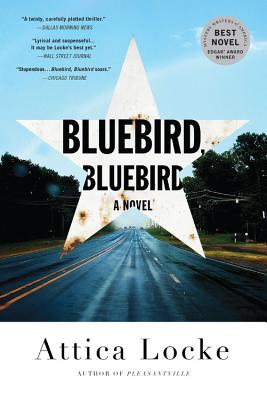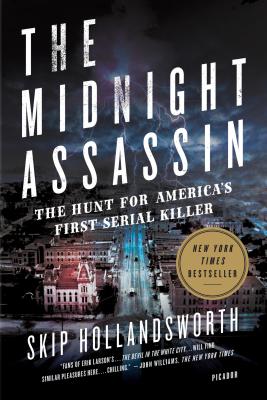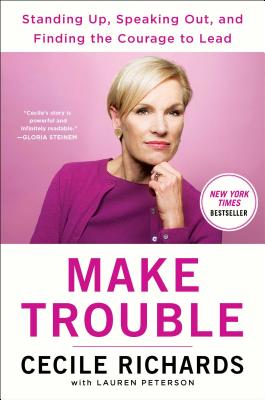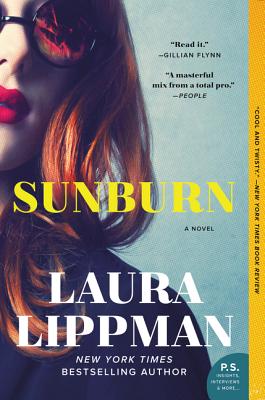I used the opportunity of writing in the mystery section of BookPeople to promote books on race and racism, in addition to other good books
Scott Butki reads about 70 books, and interviews about 30 authors, a year, while also using book discussions to help create change and educate, particularly in social justice areas. An index of his interviews with authors is here.
These first two I read this month for upcoming interviews in MysteryPeople. Both books come out in January 2019.
No Mercy by Joanna Schaffhausen – I was hooked as soon as I read the opening line: “You kill one guy, one time, and suddenly everyone thinks you need therapy…” The protagonist, a police officer, is famous because she killed a particularly brutal murderer. He’s in prison, she’s involuntarily suspended.
While dealing with harassment, unwanted attention and personal threats for her actions she’s pushed to join a group therapy consisting of other survivors of terrible crimes. As she and an FBI profiler began to investigate the cases of two of the survivors in the group they find thing are not as simple or clear as one would expect. There are many twists and turns as well great character development.
Scrublands by Chris Hammer – The author, a former journalist, writes about a journalist, Martin, sent to a drought-ravaged town in Australia where the one year anniversary of an event is coming up: A year earlier a priest stood on the church steps with a gun and shot several people before being killed himself.
Martin finds things are not as it seems as far as the story told about the incident and while investigating there’s fires, a fatal car accident and he falls in love with a local resident. The old journalism rule about not becoming part of the story is broken repeatedly. This book has twist after twist including Martin publishing stories that seem accurate, at the time, but soon turn out to be otherwise. This is great writing that will keep surprising you.

Bluebird, Bluebird by Attica Locke – There have been plenty of white male authors who have written about real or fictional white male Texas Rangers. But in 2018, and for the next few years, I vowed to read less books by white males, both to coordinate with anti-racism work I do, and to get the perspectives of writers who might be outside my usual comfort range. That led me to this great novel.
With Bluebird, Bluebird, Locke, a black female author, writes about a black member of the Texas Rangers as he tries to solve a double murder of a white woman and black man in a town filled with Aryan Brotherhood members and local law enforcement who wants to ignore the racists and the drugs they deal.
With Ranger Darren Mathews, a native of east Texas, Locke has created a fascinating character who is torn between doing the right thing and doing what law enforcement, both local and the state, is telling him to do. All this in a backwater town that used to be a plantation.
 Midnight Assassin: Panic, Scandal And The Hunt For America’s First Serial Killer
by Skip Hollandsworth – I don’t usually go for true crime books but
this was an exception: A book about a serial killer in Austin, TX,
believed to be the first known serial killer in the United States.
Midnight Assassin: Panic, Scandal And The Hunt For America’s First Serial Killer
by Skip Hollandsworth – I don’t usually go for true crime books but
this was an exception: A book about a serial killer in Austin, TX,
believed to be the first known serial killer in the United States.This is an excellent, true account of a weird infamous part of Austin’s history, that there was a serial killer in the late 1800s back before serial killers, finger print analysis, etc. was a known thing. To read this is to see how backward things were, from police trying to stop the killings by repeatedly arresting innocent black men, even when they were victims of the crimes, to how they would treat, or mistreat, crime scenes. After each killing, local leaders would walk all over the crime scene and when someone would finally bring a bloodhound it couldn’t even get a scent.
The killer was never caught but the killings stopped. Some think the killer may have been Jack the Ripper because after the killings stopped in Austin the killers began in London and there were similarities. The book is full of color and great details.
Splinter In the Blood by Ashley Dyer – If you like mysteries with lots of twists you need to read this book. The story starts out with a bang, literally, with a scene in which Detective Chief Greg Carver, the lead investigator of a serial killer named the Thorn Killer has been shot. He is sprawled on his seat in his own home. OK, maybe there are other mysteries that have started this way.
But I’m not done setting the stage because Carver remembers the shooter standing in front of him. Soon, by the end of the next chapter, he has remembered who shot him: His partner, Sgt. Ruth Lake, who after shooting him takes away his files, compromising the crime scene.
As the book proceeds there become two investigations: Who shot Carver and who is the Thorn Killer? Lake, of course, doesn’t tell anyone what she did, and is not supposed to be working on the former investigation but can’t stay away.
Gradually, we began to understand her motives, her disdain for Carver as a person and as an investigator. And Lake and the Thorn Killer are both fascinating characters…
I interviewed the author for Mystery People here.
 Make Trouble By Cecile Richards – I was looking forward to reading Cecile Richards’ memoir even before I was given the generous offer to interview her about it for BookPeople.
Make Trouble By Cecile Richards – I was looking forward to reading Cecile Richards’ memoir even before I was given the generous offer to interview her about it for BookPeople.The book has something for everyone. Want to know what it’s like to be the daughter of former Texas Governor Ann Richards? Check. Want to know what it was like for Cecile to testify before a Congressional panel over those bogus fetal tissue videos? Check. Want to know what Cecile is going to do next, now that she’s stepping down as leader of Planned Parenthood so that someone else can step into that role? Well, that’s one thing that’s not in the book, but it’s a question you can expect authors, including me, to interview her about.
Near the book’s start, Richards shares some great stories about her early experiences making trouble, such as when she shocked a teacher by refusing to say the Lord’s Prayer and announcing her family did not read the Bible in their home. “It was the first time I remember having to decide: Do I accept things the way they are, or question authority? I chose the latter, and from that point forward was branded a troublemaker,” she writes. “Once the initial shock wore, it became a badge of honor. I’ve been making trouble ever since – which, to me, means taking on the powers that be, being a thorn in someone’s side, standing up to injustice, or just plain raising hell.”
Some of my favorite parts from the first half of the book talk about Cecile’s early work organizing unions to help nursing home and garment workers in East Texas and working with other activists. She writes something I suspect all activists can relate to: “Fighting for what you believe in can be discouraging, defeating and sometimes downright depressing. But it can also be powerful, inspiring, fun, and funny – and it can introduce you to people who will change your life. That’s the message I want to spread far and wide. That’s why I wrote this book”
As someone long fascinated by Ann Richards, I especially enjoyed Cecile talking about what it is like having your mother run for and win state elections all the way up to the governor’s race. Cecile is frank about all the sexism Ann put up with everywhere while running — from other politicians, the media, etc. I love Ann’s approach and attitude. “My brother once asked how she managed to stay calm when dealing with Clayton Williams (who had joked about women and rape). ‘You know,’ she said, ‘my blood pressure drops. I go into cool mode. Here he is, another guy who lives a privileged life and doesn’t give a damn about women. Now I get to expose that to the world. He doesn’t get under my skin any more than the rest of the people I’ve dealt with all my life.” On that page, there’s a photo of Williams pointing his finger in Ann’s face with the caption: “Ann Richards versus Clayton Williams. He was a classic good old boy who wanted to put women in their place. It didn’t work.”
Cecile describes in detail a story many in Texas know: Wendy Davis’ filibuster. She details her own experiences while in the rotunda of the capitol. Then she tosses off this gem: “At one point even Barack Obama tweeted to a cool 41 million followers, ‘Something special is happening in Austin tonight.’ Someone read the tweet out loud in the rotunda; it was a real morale boost, and possibly the one time in recorded history a president’s late-night tweet actually did some good.”
 Sunburn by
Laura Lippman – Lippman can do no wrong in my book and this novel is
definitely one of my favorites. I have read all of Lippman’s novels
(about 25 of them) and even got to interview her for some of her earlier
ones, back when she was writing her Tess Monaghan series.
Sunburn by
Laura Lippman – Lippman can do no wrong in my book and this novel is
definitely one of my favorites. I have read all of Lippman’s novels
(about 25 of them) and even got to interview her for some of her earlier
ones, back when she was writing her Tess Monaghan series. Since Lippman, a former newspaper reporter for the Baltimore Sun, switched to stand-alones her books have garnered her, deservedly, more praise and acclaim as well as getting some of her books on the New York Times bestseller lists. I’d encourage you to check out any of her books as they have fully developed characters, great plots, good twists, and excellent dialogue.
For her latest book, Sunburn, she crafts another great story, set up in a way so you, the reader, have no idea where things are going to go. As the book starts a guy named Adam is meeting a woman named Polly in a small bar in a dive town, Belleville, Delaware. He’s interested in her from the start and while we think it’s just a brewing romance we gradually realize he’s also investigating her.
Polly has an even more complicated story. She has, we learn, just walked away from her husband and daughter and it was while leaving them that she stopped in this city. We gradually learn more about why she left, why Adam is investigating her and why a third and fourth person are also paying attention to Polly’s actions. It’s a great page-turner, one which is difficult to put down.
White Fragility by Robin DiAngelo – This author has written a great new book, White Fragility, a term she coined years ago. In it she not only explains in depth what the term means and how to address people when they are experiencing it but she covers many other issues about racism, specifically regarding white people working on their own racism-related issues.
I confess to having a few “a ha! she said it too!” moments when she said things which I’ve been saying in anti-racism work I do at my church and in discussions about books about race such as this.
Specifically, she notes something about progressives which I also find myself pointing out about too many of the Unitarian Universalist church and social justice related groups I work with, namely that the folks that people of color, and anti-racism educators like her, find the most frustrating are fellow progressives. The problem is the logic becomes “I’m progressive and care about social justice, therefore I know everything I need to know about this topic.”
The reality is those are often the people who need the most work, need the most help. These are the folks making microaggressions, not realizing how their works and actions can be hurtful, people who can and do learn a lot when they accept they can be educated in this area.
One of my mantras in this work is that the focus should be on the impact, not the intent, a topic she also touches on. It’s easy when someone white says or does something racist to retreat to the position of “but that was not my intention.” That good intention, though, does not change the impact on the person harmed. Think before you speak and act about whether your well intended actions may be perceived or taken in other ways.
This is why she and I and others talk about this work being uncomfortable and difficult for it’s in those places where the real work is done. The work done in polite conversations is often of less depth and doesn’t usually go far enough.
I encourage you to read this book, join discussions and conversations about this and other books about race and open yourself up to doing work that may be uncomfortable but can potentially be life changing.
Among the Ruins by Ausma Zehanat Khan – This is the third in the author’s engrossing series about Esa Khattek and Rachel Getty, who work for Canada’s Community Policing department. In this new book Esa is on leave, traveling in Iran when the Canadian government asks him to investigate the death of a renowned Canadian-Iranian filmmaker. This gives the author an opening to talk about Iranian culture. Parts of the book are based on real life events including the disputed 2009 Iranian presidential election. The series does an excellent job of providing a mystery-thriller while also educating the reader.
 So You Want To Talk About Race
by Ijeoma Oluo – I have read a lot of books about race and racism while
doing antiracism work in recent years and this is the best one I have
come across yet in terms of being prescriptive. It is by a woman of
color who addresses all the questions folks have, from “How do I know
when an issue is about race?” (answer: if a person of color says it’s
about race then it’s about race), “how do you address those who try to
switch debates of racism into debates of classism?” (point out that the
tools we need to destroy classism are not the same as those needed to
stop racism, not to mention the reasons a white person might be working
class might be different than those of a person of color), “What if you
mess up when talking about race?” (You will, don’t sweat it,) etc.
So You Want To Talk About Race
by Ijeoma Oluo – I have read a lot of books about race and racism while
doing antiracism work in recent years and this is the best one I have
come across yet in terms of being prescriptive. It is by a woman of
color who addresses all the questions folks have, from “How do I know
when an issue is about race?” (answer: if a person of color says it’s
about race then it’s about race), “how do you address those who try to
switch debates of racism into debates of classism?” (point out that the
tools we need to destroy classism are not the same as those needed to
stop racism, not to mention the reasons a white person might be working
class might be different than those of a person of color), “What if you
mess up when talking about race?” (You will, don’t sweat it,) etc. I have personally recommended this book to about 50 people and led two book discussions on it.
Honorable Mentions:
A Man Called Ove by Fredrik Backman – Reading this was a wild ride. I could not get into the story or the main character of Ove but persevered since I was reading it for a book club. Then the last 30 pages had me all crying and emotional as I realized the book had affected and touched me way more than I realized. Others I know had similar experiences.
Robicheaux by James Lee Burke – One of his best books in years and with my favorite protagonist of his, Dave Robicheaux. All of his books have amazing prose and descriptions to die for but this one has an even better plot than usual. I was lucky enough to interview him about his new book here.
Chasing Hillary: Ten Years, Two Presidential Campaigns, And One Intact Glass Ceiling by Amy Chozick – The author covered Hillary’s campaigns first for The Wall Street Journal and later for The New York Times. She does an amazing job explaining what it is like to essentially put your personal life on hold while you, yes, chase Hillary, along with lots of other reporters, from event to event, struggling to find new ways to report daily on the campaign even when the speeches are identical.
For me, who entered into journalism in college thinking one day I would be covering presidential campaigns for The New York Times, the most interesting parts involved having to deal with a campaign staff trying to manipulate her and editors not always on the same page as her, not to mention what it was like when the campaign, and the journalists covering it, realized their polling involving Trump was so off.
No comments:
Post a Comment